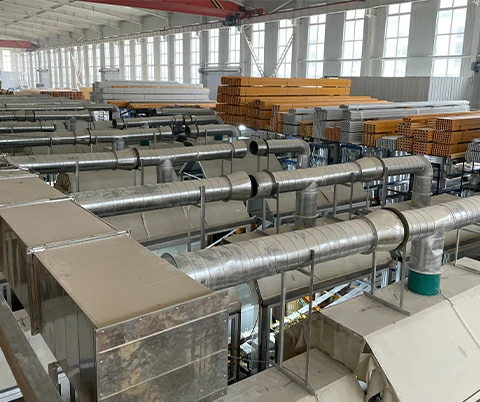loading...
- No. 9, Xingyuan South Street, Dongwaihuan Road, Zaoqiang County, Hengshui, Hebei, China
- admin@zjcomposites.com
- +86 15097380338
- Welcome to visit our website!
welded bar grating
Understanding Welded Bar Grating A Versatile Solution for Industrial Applications
Welded bar grating is a type of metal grating that has become increasingly popular in various industrial applications due to its strength, versatility, and durability. This type of grating is manufactured by welding together a series of load-bearing bars with perpendicular cross bars. The result is a robust, lightweight, and slip-resistant surface that is ideal for a wide range of applications, including walkways, platforms, stair treads, and drainage covers.
The Manufacturing Process
The manufacturing of welded bar grating begins with the selection of high-quality raw materials, typically carbon steel, stainless steel, or aluminum, depending on the specific requirements of the application. The load-bearing bars are cut to the desired length and then arranged in a grid pattern. Perpendicular cross bars are then welded to the load-bearing bars at set intervals, ensuring maximum strength and stability.
After welding, the grating is often subjected to a process called passivation if made from stainless steel, which enhances the corrosion resistance of the surface, ensuring long-lasting performance even in harsh environments. The final product can be coated with various finishes, such as powder coating, to further improve its appearance and resistance to environmental factors.
Key Advantages
Welded bar grating offers numerous advantages that make it an ideal choice for many applications
1. Strength and Durability The welding process creates a solid and durable product that can withstand heavy loads and impact. This makes it suitable for industrial settings where strength is a critical factor.
2. Corrosion Resistance When made from stainless steel or coated with protective finishes, welded bar grating can resist rust and corrosion, making it suitable for outdoor or wet environments.
3. Slip Resistance The open design of welded bar grating allows for excellent drainage, reducing the risk of water accumulation and slip hazards. This feature makes it an excellent choice for walkways and work platforms.
welded bar grating

4. Lightweight Despite its strength, welded bar grating is lightweight compared to solid flooring options. This characteristic makes it easier to handle and install, reducing labor costs.
5. Customizability Welded bar grating can be customized in terms of size, spacing, and materials to meet specific requirements, making it highly versatile for various applications.
Applications
The applications of welded bar grating are vast and diverse. Some of the most common uses include
- Walkways and Platforms Providing a safe walking surface in industrial plants, warehouses, and construction sites. - Stair Treads Used in stair design to enhance safety and prevent slips and falls. - Trench Covers Often used in drainage systems to cover trenches while allowing liquid to flow through. - Catwalks Providing a safe passage for workers in facilities, especially in areas where equipment and machinery are in operation.
Maintenance and Care
While welded bar grating is designed to be durable, proper maintenance is essential to ensure its longevity. Regular inspections should be conducted to check for signs of wear or damage, particularly in high-traffic areas. Cleaning should be done as needed to remove debris, grease, and other substances that may affect the slip resistance of the grating. In corrosive environments, periodic re-coating or touch-ups may be necessary to maintain protective finishes.
Conclusion
Welded bar grating is a reliable and efficient solution for various industrial applications, offering a combination of strength, durability, and safety. Its versatile nature and customization options make it suitable for a wide range of purposes, from walkways to drainage systems. With proper maintenance, welded bar grating can provide long-lasting performance and continue to meet the demands of industrial environments for years to come. As industries evolve and the need for safe and efficient solutions grows, welded bar grating remains a top choice for engineers and facility managers alike.
-
The Rise of FRP Profiles: Strong, Lightweight, and Built to LastNewsJul.14,2025
-
SMC Panel Tanks: A Modern Water Storage Solution for All EnvironmentsNewsJul.14,2025
-
GRP Grating: A Modern Solution for Safe and Durable Access SystemsNewsJul.14,2025
-
Galvanized Steel Water Tanks: Durable, Reliable, and Ready for UseNewsJul.14,2025
-
FRP Mini Mesh Grating: The Safer, Smarter Flooring SolutionNewsJul.14,2025
-
Exploring FRP Vessels: Durable Solutions for Modern Fluid HandlingNewsJul.14,2025
-
GRP Structures: The Future of Lightweight, High-Performance EngineeringNewsJun.20,2025
